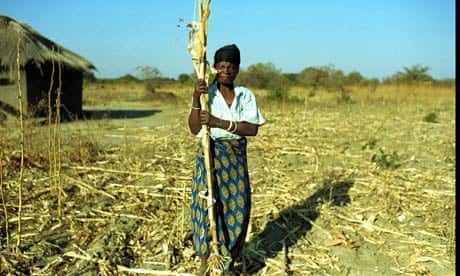Climate change could lead to shortages and punishing 130% price rises in staple foods within our lifetime, raising the spectre of riots and civil unrest, a new study warned today.
The report, by the International Food Policy Research Institute, warned that warming of even one degree by 2050 could play havoc with food production – with hotter, wetter temperatures cutting crop yields.
With a global population of 9 billion forecasted by the middle of the century, the effects of lower crop yields could be devastating – especially if income growth faltered in developing countries, the report warned.
This year's drought and wildfires in Russia and the massive floods in Pakistan provided a window into a future of extreme weather conditions.
So did the food unrest of the last few years.
"The food price spikes of 2008 and 2010 both had important weather components," Gerald Nelson the report's co-author said.
In the world's poorest countries, average calorie intake would fall significantly, even by 2025. By the middle of this century, child malnutrition could rise by 18%.
"Reducing emissions growth to minimise the effects of climate change is thus essential to avoid a calamitous post-2050 future," the report said.
In a worst-case scenario, the study forecast the price of maize – a staple in sub-Saharan Africa – could go up by 130%. That's 34% higher than in a world without climate change, it said. Rice prices could rise by as much as 78%, and wheat by 67%.
Rice and wheat production would fall across the globe. But in a conference call with reporters, Nelson said sub-Saharan Africa and south Asia would likely suffer most under climate change.
However, even the American midwest would see poorer harvests because of hotter, drier weather patterns. "The corn belt in the United States has serious production losses," he said.
The study is relatively rare in forecasting severe and far-reaching consequences of climate change by 2050 – a time period within the lifetime of most people alive today – rather than the end of the 21st century.
It produced 15 different scenarios of the world in 2050, combining different rates of income and population growth with various climate outcomes,
It also called for warming caused by agriculture – thought to be responsible for about 30% of global greenhouse gas emissions – to be reduced as well as the adoption of a carbon-negative agriculture target by 2050.

Comments (…)
Sign in or create your Guardian account to join the discussion